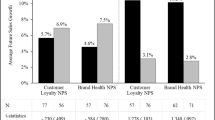Abstract
This study examines what is generally regarded to be the most important measure of innovation in the pharmaceutical industry—the extent to which new drugs are developed and marketed by pharmaceutical firms. Pharmaceutical industry output, as measured by new chemical entity (NCE) approvals in the United States since the 1962 Amendments to the Federal Food, Drug, and Cosmetic Act of 1938, is examined at the firm level. This long-term historical perspective permits us to observe the extent to which this industry has been concentrated with respect to innovative output and how stable company leadership positions have been over time. Databases containing detailed information on all NCEs approved in the United States from 1963 to 1999 and on a large sample of investigational NCEs taken into clinical testing since 1963 were utilized to examine productivity in developing new products at the firm level according to the following stratifications: period of approval, therapeutic class, whether the compounds were self-originated (ie, developed by one firm) or acquired (eg, licensed), and Food and Drug Administration ratings of therapeutic significance. The data indicate that innovation in the pharmaceutical industry is fairly widely dispersed and has become less concentrated over time. Turnover in company rankings based on the number of new drug introductions is substantial. Nonetheless, firms have differed in the productivity of their development programs and some firms have consistently maintained high ranks for their level of innovative output over a lengthy period.
Similar content being viewed by others
References
DiMasi JA, Hansen RW, Grabowski HG, Lasagna L. Cost of innovation in the pharmaceutical industry. J Health Econ. 1991;10(2):107–142.
DiMasi JA, Hansen RW, Grabowski HG, Lasagna L. Research and development costs for new drugs by therapeutic category: a study of the US pharmaceutical industry. PharmacoEcon. 1995;7(2):152–169.
DiMasi JA. Success rates for new drugs entering clinical testing in the United States. Clin Pharmacol Ther. 1995;58(1):1–14.
Grabowski HG, Vernon J. Returns to R&D on new drug introductions in the 1980s. J Health Econ. 1994;13:384–406.
DiMasi JA, Seibring MA, Lasagna L. New drug development in the United States, 1963 to 1992. Clin Pharmacol Ther. 1994;55(6):609–622.
DiMasi JA, Grabowski HG, Vernon J. R&D costs, innovative output and firm size in the pharmaceutical industry. Int J Economics Bus. 1995;2(2):201–219.
Henderson R, Cockburn I. Measuring competence? exploring firm effects in pharmaceutical research. Strategic Manage J. 1994;15(Winter special issue):63–84.
Gambardella A. Competitive advantages from in-house scientific research: the US pharmaceutical industry in the 1980s. Research Policy. 1992;21:391–407.
Lamoreaux N, Galambos L. Understanding innovation in the pharmaceutical industry. Presented at Understanding Innovation, The Johns Hopkins University, Baltimore, MD, June 6, 1997.
Goodwin JS. The empirical basis for the discovery of new therapies. Perspectives Biology Med. 1991;35(1):20–36.
Grabowski HG. Drug Regulation and Innovation: Empirical Evidence and Policy Options. Washington, DC: American Enterprise Institute; 1976.
Grabowski HG, Vemon J. Innovation and structural change in pharmaceuticals and biotechnology. Industrial and Corporate Change. 1994;3(2):435–449.
Pharma Marketletter. The role of mega-mergers in the future of the pharma industry. Pharma Marketletter. 1997;Feb 10, 24(6):26–27.
Tompkins R. Analyzing the impact of mergers and acquisitions. Scrip Magazine. 1996;Oct, 50:6–8.
Dranove D, Meltzer D. Do important drugs reach the market sooner? RAND J Economics. 1994;25(3):402–423.
Shulman SR, Bienz-Tadmor B, Seo PS, DiMasi JA, Lasagna L. Implementation of the orphan drug act: 1983–1991. Food Drug Uw J. 1992;47(4):363–403.
Shulman SR, Manocchia M. The U.S. orphan drug program: 1983–1995. PharmacoEcon. 1997;12(8):312–326.
Scherer FM, Ross D. Industrial Market Structure and Economic Performance. 3rd ed. Boston: Houghton Mifflin; 1990.
Grabowski HG, Vernon J. New studies on market definition, concentration, theory of supply, entry, and promotion. In Chien RI, ed. Issues in Pharmaceutical Economics. Lexington, MA: DC Heath; 1979.
Hirschman AO. The paternity of an index. Am Econ Review. 1964;54:761.
U.S. Bureau of the Census. 1992 Census of Manufacturers: Concentration Ratios in Manufacturing, [MC-92-S-2]. Washington, DC: US Bureau of the Census; 1996.
Grabowski HG, Vernon J. Structural effects of regulation on innovation in the ethical drug industry. In Mason RT, Quails PT, eds. Essays on Industrial Organization in Honor of Joe Bain. Cambridge, MA: Ballinger; 1976.
Stigler GJ. Introduction. In Business Concentration and Price Policy. Princeton, NJ: Princeton University Press; 1955.
Cocks DL. Product innovation and the dynamic elements of competition in the ethical pharmaceutical industry. In Helms RB, ed. Drug Development and Marketing. Washington, DC: American Enterprise Institute; 1975.
Schwartzman D. Innovation in the Pharmaceutical Industry. Baltimore, MD: Johns Hopkins University Press; 1976.
Ravenscraft DJ, Scherer FM. Mergers, Sell-offs, and Economic Efficiency. Washington, DC: Brookings Institution; 1985.
Galambos L, Sturchio JL. Sustaining innovation: critical transitions at Merck & Co., Inc. Presented at Understanding Innovation, The Johns Hopkins University, Baltimore, MD, June 7, 1997.
Vagelos PR. Are prescription drug prices high? Science. 1991;252:1080–1084.
Henderson R, Cockburn I. Scale, scope, and spillovers: the determinants of research productivity in drug discovery. RAND J Econ. 1996;Spring, 27(1):32–59.
Schumpeter JA. Capitalism, Socialism, and Democracy. 3rd ed. New York: Harper & Row; 1950.
Chandler AD. Scale and scope: The Dynamics of Industrial Capitalism. Cambridge, MA: The Belknap Press of Harvard University Press; 1990.
Drews J. In Quest of Tomorrow’s Medicines. New York: Springer-Verlag; 1998.
Nelson RR, Winter SG. An Evolutionary Theory of Economic Change. Cambridge, MA: The Belknap Press of Harvard University Press; 1982.
Nelson RR. Recent theorizing about economic change. J Econ Literature. 1995;33(1):48–90.
Author information
Authors and Affiliations
Corresponding author
Rights and permissions
About this article
Cite this article
DiMasi, J.A. New Drug Innovation and Pharmaceutical Industry Structure: Trends in the Output of Pharmaceutical Firms. Ther Innov Regul Sci 34, 1169–1194 (2000). https://doi.org/10.1177/009286150003400425
Published:
Issue Date:
DOI: https://doi.org/10.1177/009286150003400425




